The department has diversified research and on the outcome of this research has transferred technologies for benefit of farmers
Low yielding cows in Tamil Nadu are fed on gruel based unbalanced feed. Often the gruel includes kitchen waste, table waste etc., which do not support the rumen microorganisms. Rumen microorganisms play an important role in facilitating the digestion of the feed and fodder that the cow consumes. In addition these microorganisms also get digested in the lower gut and provide quality microbial protein to the animal.
Thus, it is imperative to support the nutritive requirement of rumen microorganisms to facilitate digestion of low quality feed and fodder as well as to reap the high quality microbial protein that is provided by them. Extensive study to assess the nutrient requirement of rumen microorganisms lead to conclusion that they require readily fermentable energy, nitrogen, copper, cobalt and sulphur to flourish.
Hence, a supplement called TANUVAS GRAND supplement was developed to selectively support growth of rumen microorganisms. The acronym for this supplement is GRAND in which G stands for Gruel, R stands for rooted, A stands for Additive, N stands for Nourishment and D stands for Drops. TANUVAS GRAND is an aqueous solution filled in 10 ml polythene sachet to facilitate one serving supplement to gruel based diet. Two servings are required per day to cater the needs of rumen microorganisms. Experiments on the effect of GRAND supplementation have shown that the in vitro apparent digestibility of fodder and microbial biomass increases by three fold over non supplementation group.
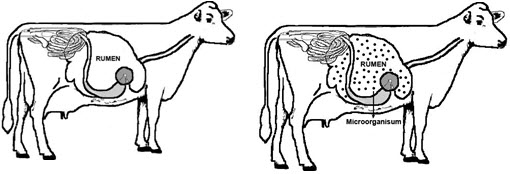

TANUVAS GRAND supplement is beneficial to nitrogen deficient diet and is more effective when diet contains sufficient energy. TANUVAS GRAND supplement increases milk production on an average of 841.96 + 33.69 ml/day/cow and ranges between 500 ml and 1000 ml /day/cow in majority of cows (80%) that responded. TANUVAS GRAND supplement is capable of preventing onset of Sub Acute Ruminal Acidosis (SARA) that occurs due to feeding excess of cereals to ruminants. Consequently the dung voided will be well formed and respiration rate and skin and coat condition improves.
The cost of 20 ml of TANUVAS GRAND is only one rupee as against Rs 10 being the revenue generated for 500ml of additional milk / day.
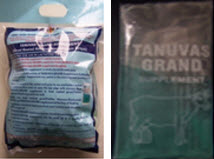
In order to reduce the feeding cost without compromising the nutritive value a gaint exercise was carried out by Professor and Head, Department of Animal Nutrition along with 27 professors and five hundred Veterinary Assistant Surgeons from the department of Animal Husbandry as well as from Tamil nadu milk producer's federation to survey the entire Tamil nadu for the mineral status in soil, plant and in the blood of Dairy cows. Over 10,000 samples were analysed for their mineral content and minerals that are lower than the prescribed level was identified for each district. Only such of those minerals that were deficit were included in the respective region.
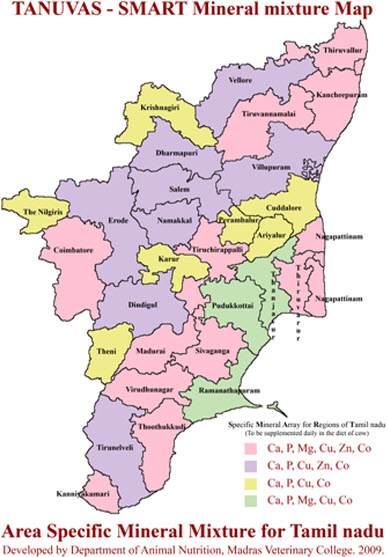
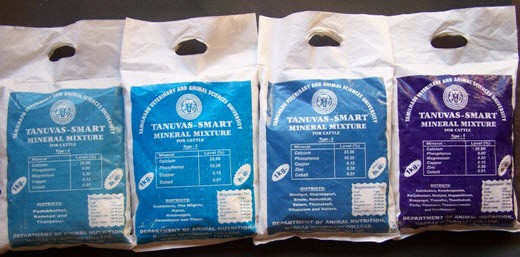
Thus four sets of mineral mixtures were identified and a mineral map was drawn over the Tamil nadu to depict the minerals that need to be supplemented in those districts. Thus evolved area specific mineral mixture has been named as TANUVAS – SMART mineral mixture and would be cheaper by Rs ten to twelve / kg over the conventional mineral mixture based on BIS specification. TANUVAS stands for Tamil nadu Veterinary and Animal Sciences University and SMART stands not only for its meaning but also for Specific Mineral Array foe Regions of Tamil nadu. TANUVAS – SMART mineral mixture contains only five to seven minerals as against twelve minerals in BIS specification. TANUVAS – SMART mineral mixture is suitable only for low and medium level milk yielding Dairy cows and high milk yielding cows (> 20 liters/day) require mineral mixture based on BIS specification. About 50 g of TANUVAS – SMART mineral mixture should be supplemented to cows daily, which means that a farmer having five cows would be able to save about Rs 1000 / year.
Rusitec is an in vitro semi continuous culture system. RUSITEC (Rumen simulation technique) balances the conflict of interest between animal activist and animal nutritionist. It simulates heterogeneous rumen under simplified conditions. The apparatus is designed to run continuously and gives the operator maximum control. The inputs as well as the outputs including the gases can be determined using it. Normal solid feed is placed along with the inoculum (microbes) from the donor animal (input) in the reaction vessel. The amount of solid material that leaves the vessels each day is known, as it is taken out manually. The output of the end product of fermentation (VFA, methane, CO2) can be determined from the effluent. TANUVAS RUSITEC can be used in the place of fistulated ruminants to carry out degradability studies, rumen kinetic studies etc
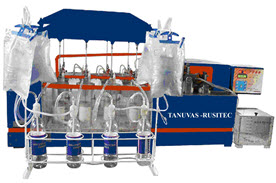
The growing livestock sector in India has led to increased requirement for forages, which is not met by existing crop residues or cultivated forages. The advent of paddy harvesting using combine harvester has also led to decline in supply of paddy straw for animal feeding. All this has created a need for identifying newer feeds. Sugarcane tops considered as a waste is usually burnt in the fields as it dries up quickly and becomes unpalatable. Moreover there ia myth that feeding of sugarcane tops will lead to abortion in pregnant cows. These issues have been taken up and a technology developed to enrich and preserve sugarcane tops in its succulent state. The myth associated with its feeding has also been demystified.
This technology enhances the nutritive value of sugarcane tops as well as increases its keeping quality. Fresh sugarcane tops are allowed to wilt for 4-5 hours in the harvesting field itself. The tops are then chopped to a length of 4-5 cm using chaff-cutter or with sickle and ensiled in silo pits with 1.0 per cent urea, 1.0 per cent common salt and 2.0 per cent molasses on air-dry basis. The above additives are dissolved in a minimum quantity of water and then sprinkled evenly over the chopped sugarcane tops. The silo pit shall be completely filled layer by layer and manual compression needs to be applied while ensiling. The silos are covered with polyethylene sheet and top dressed with mud plaster. The silo can be opened 30 days after ensilement. Thus enriched and ensiled sugarcane tops have 5.81% crude protein and 47.53% of total digestible nutrients. Harvesting one acre of sugarcane yields 7000 kg of sugarcane tops, which alone on enriching and ensiling can support a cow yielding 6 liters of milk for the entire year.

Distance education was earlier focused mainly on print, audio and video. The department has developed interactive multimedia software incorporating artificial intelligence to make learning process enjoyable, thus attracting more learners.
This interactive multimedia presentation in CD ROM provides an insight on the various aspects of feed / fodder, nutritive value, processing techniques with graphics and animation. Details on feed formulation, mineral mixture formulation are given in user friendly manner. The module on "Optimising cattle feeding with locally available feed resources" is developed on problem solving approach to advocate the most appropriate feeding regimen. This software would be of great significance to academicians for teaching animal nutrition, Veterinarians for formulating feeding regimen, Farmers for understanding the need for providing adequate nutrients to their livestock to enhance their profit through dairy farming and Administrators to judge and plan to utilize the locally available resources. This software is of recent origin and the course is spread over three month duration.
Commercial enzymes available in the feed market are usually cocktail preparations and are usually not substrate specific and are often based on feed ingredients that are used in European or American continent. These enzyme mixtures produce variable results in the locally available feed ingredients in India. Further addition of enzyme preparations without fixing their dose and without targeting it to its specific substrate would not be cost effective. Considering these facts, evolving a customized non starch polysaccharidase mixture, which is substrate specific for ragi grain and sorghum grain will be advantageous and would help in enhancing the production of layer birds and a drain of money can be avoided. Customized Non starch polysachridase mixture for ragi grain will contain the following enzymes in the levels mentioned (U/g)
Customized Non starch polysachridase mixture for sorghum grain will contain the following enzymes in the levels mentioned (U/g)
Depending on the quantity of ragi grain or sorghum grain included in the layer ration the amount of enzymes to be added can be calculated using enzyme levels mentioned above.